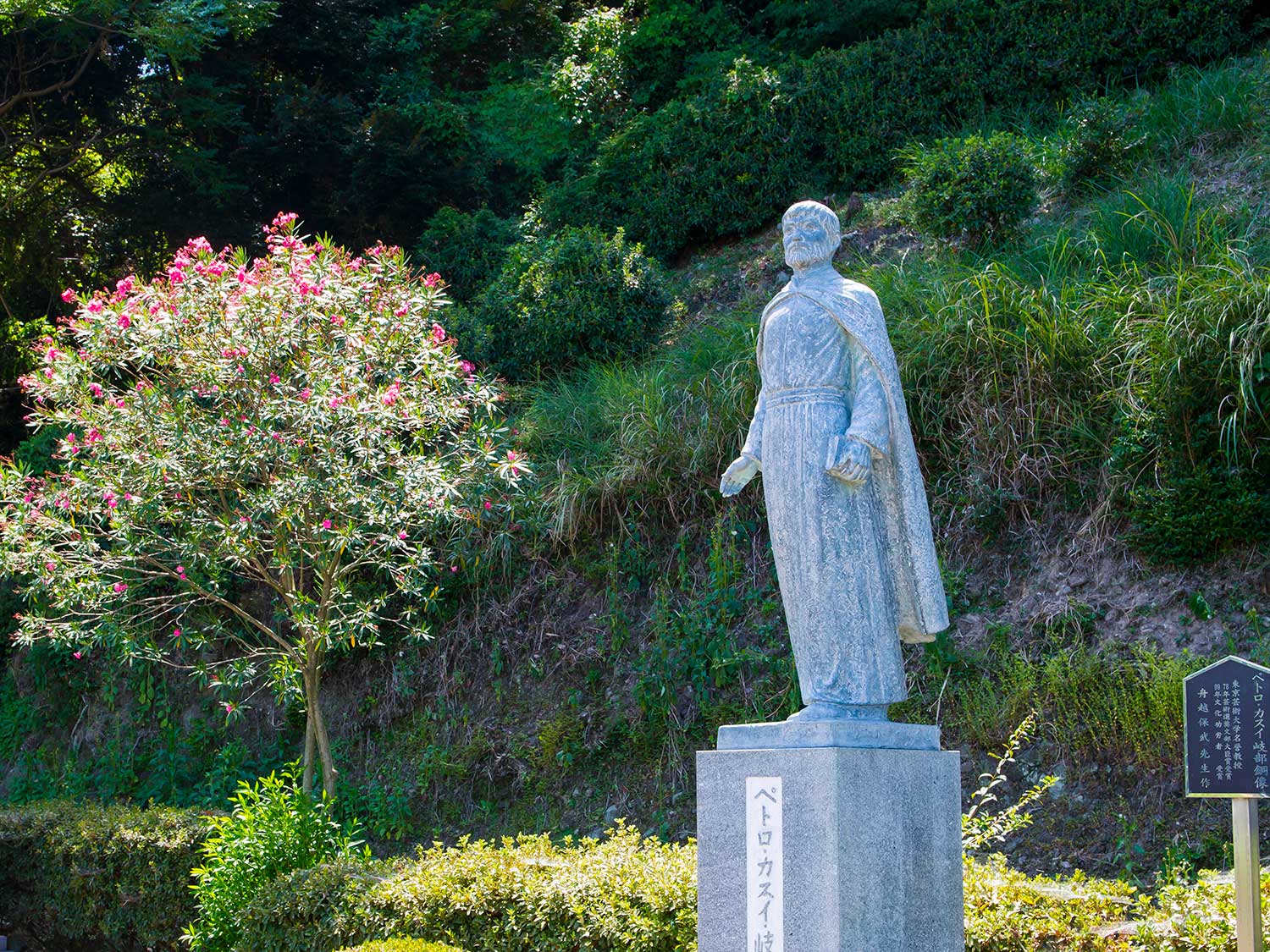
Monkey Mountain Craft Brewery
The Monkey Mountain Craft Beer brewery is one of those pocket-sized delights that Japan as a whole…

Petro Kibe (1587-1639), who is also known as Petro Kasui Kibe, was one of Japan’s earliest Christians. Petro Kibe was born into an important samurai and first-generation Christian convert family in Kibe, to this day a small hamlet near Imi, on the north coast of the Kunisaki Peninsula. His father was a chief retainer of Otomo Sorin, the local Christian warlord who ruled much of north Kyushu at the time. The first Europeans, Portuguese traders, arrived in Japan in 1543 and Christianity formally arrived soon after in 1549 with Francis Xavier (1506-1552), one of the Catholic Church’s most prolific missionaries, and met Sorin in 1551.
At the age of 13, Kibe entered a seminary near Nagasaki and six years later, in 1606, became a catechist, a Jesuit volunteer and took the name Kasui. In 1614, an exclusion order issued by the shogunate led to Kibe being expelled to Macao, where he continued his theological studies and learnt Latin. From here he set out for Rome on a journey that took three years travelling first by ship to Malacca and onto Goa. From Goa, he continued alone on foot via Baghdad to Jerusalem, becoming the first Japanese to visit the Holy Land, before taking a ship through the Mediterranean Sea to Rome, arriving in 1620. Here, he was ordained a priest after convincing the religious authorities through his knowledge of theology and Latin. After training for a further two years at a Jesuit seminar in Rome, he travelled to Lisbon where he took his vows to enter the Jesuit order before beginning his journey back to Japan via India in 1623. Coincidently, Francis Xavier was canonised as a saint while Kibe was in Rome.
By now, Christianity was banned on pain of death in Japan and missionaries prohibited from entering the country. For six years, Kibe travelled around south-east Asia trying to find a ship willing to take him to Japan. Finally, in Manila in 1630 he boarded a ship that took him to the south tip of Kagoshima in Kyushu, landing back in Japan 16 years after he first left. For the next nine years, Kibe secretively administered amongst the so-called Hidden Christians while traversing the country from Kyushu to Tohoku in Japan’s north. Here in Sendai, in 1639, he was betrayed, arrested and sent to Edo, the shogunate’s citadel - now modern-day Tokyo.
Unpersuaded to recant his Christian beliefs, Kibe was hung from his feet into a hole to suffer a slow death along with other Christian believers. Because he would not stop encouraging his fellow sufferers to endure, eventually he was taken out, burnt and finally run through with a sword. He was beatified in 2007 by Pope Benedict 16th along with 187 christians who died between 1603 and 1639.
The Petro Kasui Kibe Memorial Park celebrates his life and legacy. These quiet surroundings and its unassuming chapel belies the extraordinary adventurous life Kibe led.
At a glance
One of Japan's earliest Christians and a martyr, who is still celebrated in his hometown on the Kunisaki Peninsula.